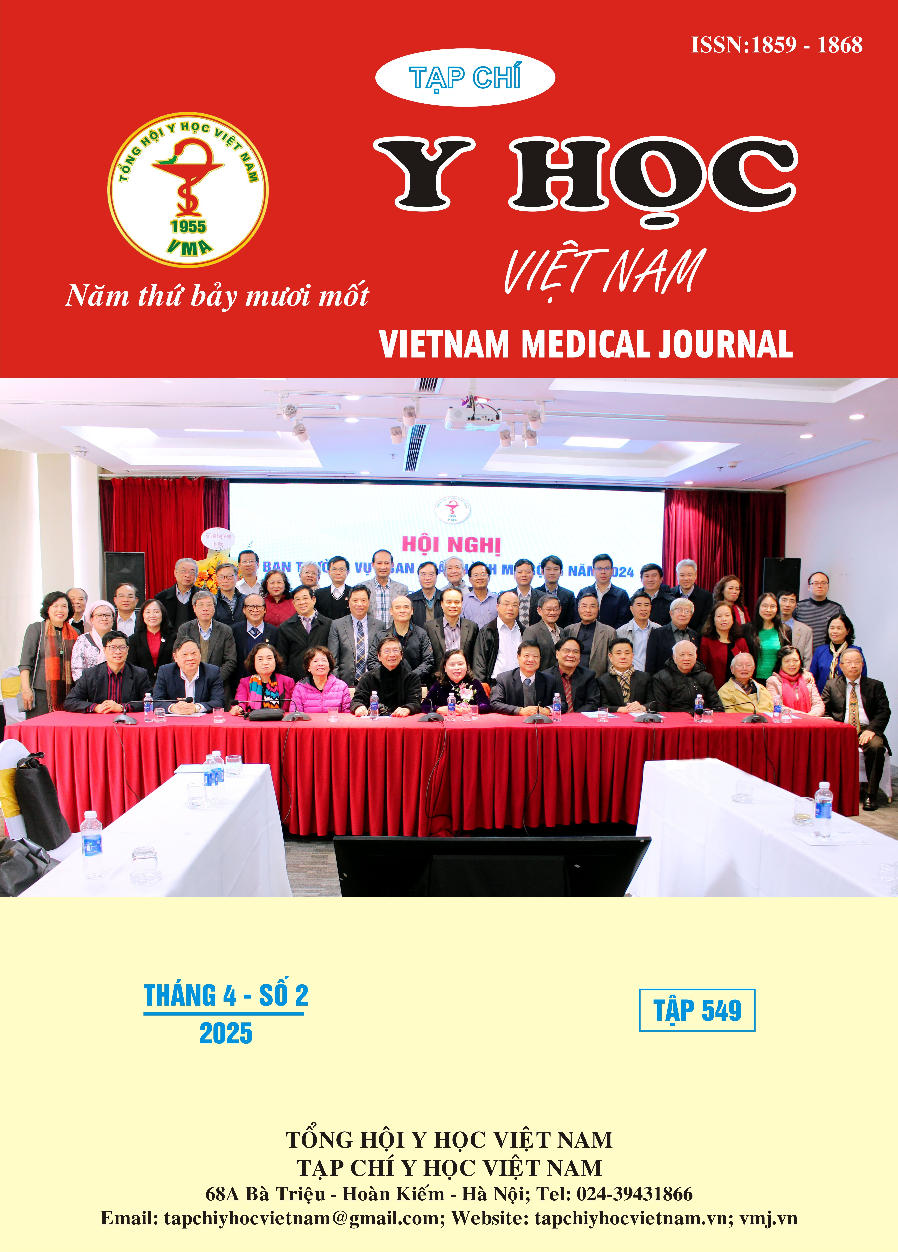CORRELATION BETWEEN IMAGING FINDINGS AND NON-OPERATIVE MANAGEMENT OUTCOMES OF SPLENIC INJURIES AT PEOPLE'S HOSPITAL 115
Main Article Content
Abstract
Objective: To evaluate the correlation between imaging findings (ultrasound, CT scan, angiography) and the outcomes of NOM for splenic injuries. Subjects and methods: A retrospective descriptive study was conducted on 91 patients with splenic injuries managed non-operatively at People's Hospital 115 (2021–2023). Ultrasound, CT scan, and angiography findings were analyzed to assess their relationship with treatment outcomes. Results: Ultrasound: Detected intra-abdominal fluid 89.1% of patients, serving as an effective initial diagnostic tool. CT scan: Identified Grade II (30.8%) and Grade III (38.5%) injuries as the main groups managed with NOM. Angiography: Detected vascular injuries (contrast extravasation or pseudoaneurysms) in 94.1% of patients. Embolization was successful in 82.4% of cases, supporting effective NOM. Success of NOM: Achieved in 96.7% of cases, with predictors including mild-to-moderate injury, absence of vascular injuries, and rapid response to initial resuscitation. Conclusion: Modern imaging techniques (ultrasound, CT scan, angiography) play a vital role in assessing the severity of splenic injuries and predicting the success of NOM.
Article Details
Keywords
Splenic injury, blunt abdominal trauma, non-operative management, CT scan, angiography, embolization
References
2. Trần Ngọc Dũng, (2019), Nghiên cứu điều trị không mổ vỡ lách trong chấn thương bụng kín tại Bệnh viện Hữu nghị Việt Đức, Đại học Y Hà Nội, Luận án Tiến sĩ Y học.
3. Adrian A Maung, Lewis J Kaplan, (2023), "Management of splenic injury in the adult trauma patient", UpToDate BMJ Case Rep: first published as,10.
4. P Roy, R Mukherjee, M Parik, (2018), "Splenic trauma in the twenty-first century: changing trends in management", The Annals of The Royal College of Surgeons of England,100, (8), pp. 650-656.
5. Lã Văn Tuấn, Lê Huy Lưu, Nguyễn Việt Thành, (2022), "Có thể điều trị an toàn không mổ cho vỡ lách chấn thương được không?", Tạp chí Y học TP Hồ Chí Minh,26.
6. Umedov Khushvaqt Alisherovich, Shomurodov Hamza Rashidovich, Khursanov Yokubjon Erkin Ugli, (2023), "Our experience in conservative treatment of spleen injury in closed abdominal trauma", Research Focus,2, (1), pp. 319-325.
7. Federico Coccolini, Giulia Montori, Fausto Catena et al, (2017), "Splenic trauma: WSES classification and guidelines for adult and pediatric patients", World Journal of Emergency Surgery,12, pp. 1-26.
8. Trần Văn Đáng, (2010), Nghiên cứu chỉ định và kết quả điều trị bảo tồn vỡ lách do chấn thương bụng kín tại bệnh viện đa khoa tỉnh Bình Dương, Học viện Quân Y, Luận án Tiến sĩ Y học.
9. Vũ Văn Quang, Nguyễn Hoàng Ngọc Anh, (2021), "Đánh giá kết quả điều trị bảo tồn vỡ lách trong chấn thương bụng kín tại Bệnh viện Trung ương Quân đội 108", Journal of 108-Clinical Medicine Phamarcy.


